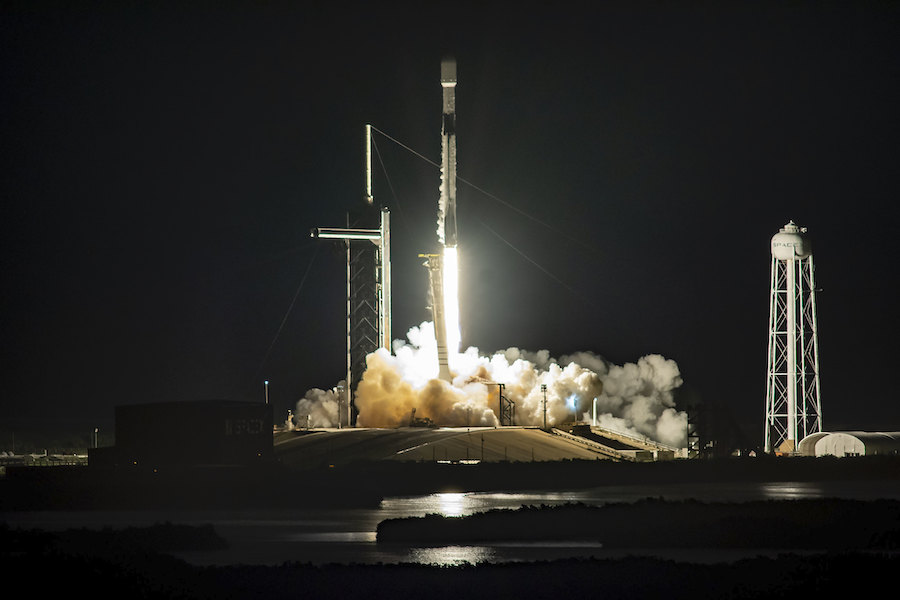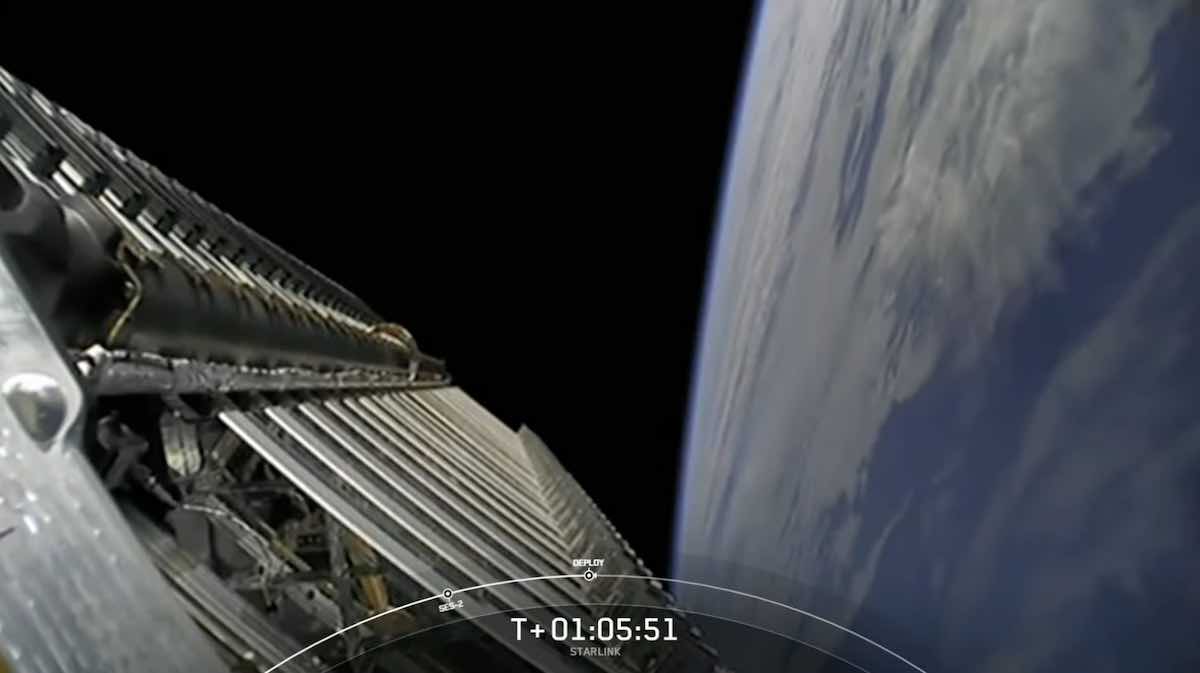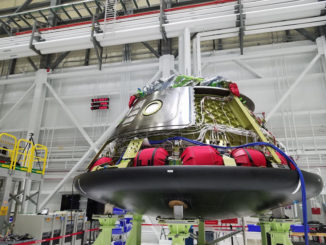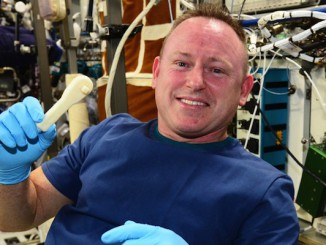EDITOR’S NOTE: Updated at 1 p.m. EST (1800 GMT) on Feb. 13 after static fire on pad 40. Also updated with launch delay of Starlink V1.0-L17 to Wednesday, Feb. 17.

Days after SpaceX opened preorders for Starlink internet service, two more Falcon 9 rockets are set to launch from Florida’s Space Coast as soon as Sunday night and Wednesday morning — weather permitting — to help push the network closer to commercial operations.
The next two Starlink missions, expected to loft around 60 satellites each, will fly on Falcon 9 rockets from two different launch pads.
Next in line is a Falcon 9 launch from pad 40 at Cape Canaveral Space Force Station scheduled for 11:21 p.m. EST Sunday (0421 GMT Monday). SpaceX is readying another Falcon 9 for blastoff from pad 39A, a few miles to the north at NASA’s Kennedy Space Center, as soon as 12:55 a.m. EST (0555 GMT) Wednesday)
The launch set for Wednesday has been delayed several times since late January, most recently to allow time for “additional inspections” on the rocket, according to SpaceX. The launch Sunday night was previously scheduled for Saturday night.
The weather outlook is iffy for both missions’ instantaneous launch opportunities, with a 40 percent chance of acceptable conditions expected at Cape Canaveral on Sunday night, when forecasters predict cloud cover, showers, and thunderstorms across the Space Coast. There’s a 70 percent probability of good weather for the launch from pad 39A early Wednesday, according to the U.S. Space Force’s 45th Weather Squadron.
After launching toward the northeast from Florida, the Falcon 9s will deliver their payloads to orbit several hundred miles above Earth, at an inclination of 53 degrees to the equator. SpaceX aims to recover the first stage booster from both missions using the company’s two drone ships dispatched into the Atlantic Ocean.
The launches Sunday and Wednesday will come less than two weeks after SpaceX’s most recent Starlink mission, which delivered 60 satellites to orbit Feb. 4 from Cape Canaveral. They will be the 19th and 20th batches of Starlink satellites launched on dedicated Falcon 9 missions since May 2019.
SpaceX has more than 1,000 satellites in its Starlink constellation, well on the way to finish deployment of its initial tranche of 1,584 Starlink stations later this year. SpaceX won’t stop there, with plans to launch additional orbital “shells” of Starlink satellites into polar orbit to enable global coverage, with a first-generation fleet totaling some 4,400 spacecraft.
Built by SpaceX technicians in Redmond, Washington, the Starlink satellites weigh about a quarter-ton each, and they launch stacked inside the Falcon 9 rocket payload shroud.
The Federal Communications Commission has authorized SpaceX to eventually operate up to 12,000 Starlink satellites.

SpaceX began accepting preorders from would-be Starlink users this week, charging $99 for a potential customer to get in line for the broadband service. Once confirmed, customers will pay $499 for a Starlink antenna and modem, plus $50 in shipping and handling, SpaceX says. A subscription will run $99 per month.
SpaceX says the service should be available throughout the United States later this year.
Beta testing of the Starlink network has been underway for months in the northern United States, Canada. SpaceX said more than 10,000 users in the United States are abroad are already on the Starlink service, according to a Feb. 3 regularly filing with the FCC.
“Starlink continues to improve as SpaceX deploys additional infrastructure and capability, averaging two Starlink launches per month, to add significant on-orbit capacity alongside activation of additional gateways to improve performance and expand service coverage areas across the country,” SpaceX wrote in the filing.
Elon Musk, SpaceX’s founder and CEO, tweeted Tuesday that SpaceX’s Starlink subsidiary will go public once it has a predictable cash flow.
“Once we can predict cash flow reasonably well, Starlink will IPO,” Musk tweeted.
Until then, SpaceX will be spending cash at a high rate to maintain the Starlink network’s high-tempo deployment, from satellite launches at an average pace of every couple of weeks to the manufacturing of user ground terminals. SpaceX has said the entire project could cost more than $10 billion, but Musk has said the revenue opportunities are even higher, providing resources for SpaceX to advance its audacious plans to send people to Mars.
“SpaceX needs to pass through a deep chasm of negative cash flow over the next year or so to make Starlink financially viable,” Musk tweeted. “Every new satellite constellation in history has gone bankrupt. We hope to be the first that does not.”
The FCC awarded SpaceX nearly $885 million in government subsidies in December through a program aimed at expanding broadband access for rural Americans.
Email the author.
Follow Stephen Clark on Twitter: @StephenClark1.



